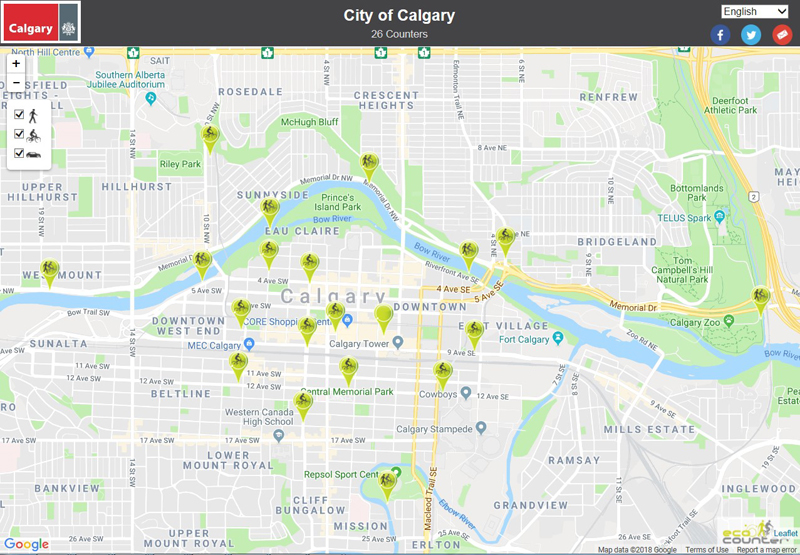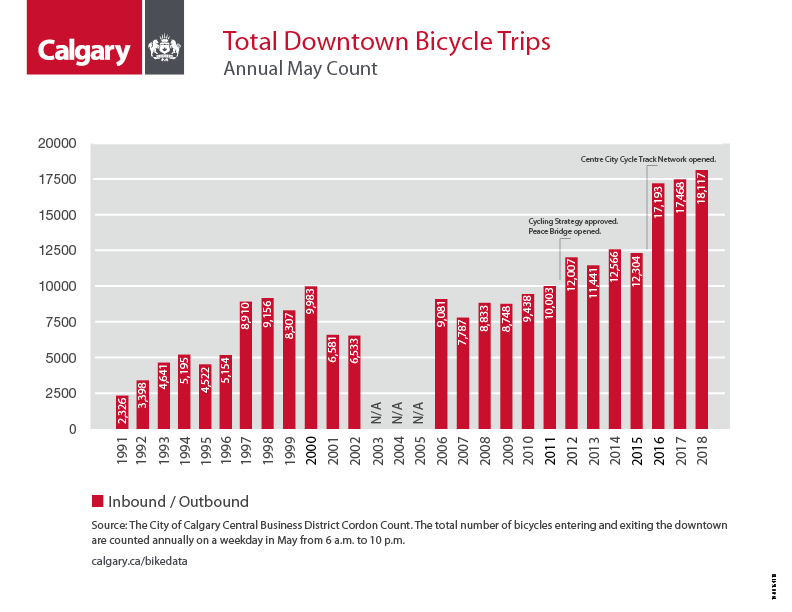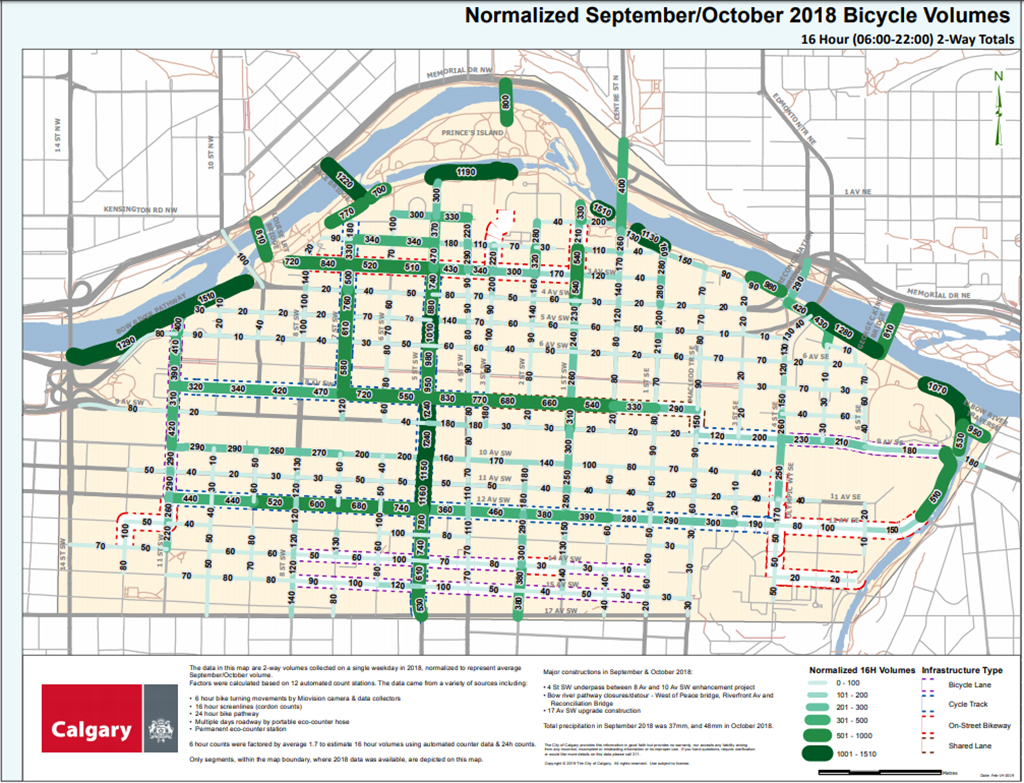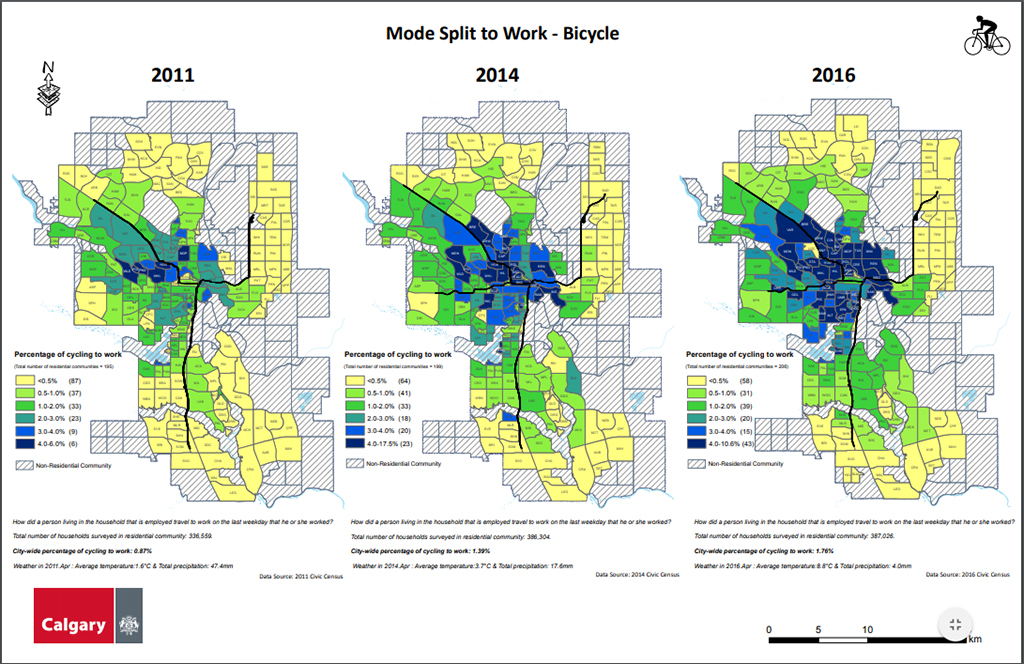Bike Data
The City of Calgary collects and analyzes bicycle data from a variety of sources to help with the planning of bikeways and to monitor trends over time. Real-time counting is available below via the Daily Bicycle Counts map. Bike data is also available on The City’s Open Data Portal.
Daily Bicycle Counts
Daily bicycle counts are available from sensors set up at multiple locations around downtown cycle tracks. Using Eco-Counter machines, cyclists are detected by loops embedded in the pavement. The data provides a breakdown of the number of cyclists on a daily, weekly, monthly and yearly basis.
The City’s bicycle counters are placed in locations that minimize interference from adjacent traffic and electromagnetic radiation.
Eco-Counters supplement the other counting methodologies that The City uses for all modes of travel, such as live observation and MioVision cameras. One of the benefits of the permanent bike counters comes from the trends that they record. We are now able to see how bicycle traffic varies with the weather, by day of the week, and by season, something that was not possible previously.
Cordon Counts
The City of Calgary uses cordon traffic counts to monitor traffic trends for all travel modes in the city. A cordon count totally encloses an area within the city, and counts all pedestrians, bicyclists, transit passengers, and vehicle drivers and passengers, entering and exiting the area. Downtown cordon counts are conducted in May of each year. The City uses the downtown cordon counts to examine changes in the transportation modal split and to monitor the goals set out in the Calgary Transportation Plan (CTP).
Historic bike data
Annual Bicycle Count
The City collected and monitors information on the number of bicycle riders, gender, age, and helmet use and will be reported on annually.
Data collected for the 2016 Bicycle Count is presented in an interactive storybook map. It includes age and pedestrian volume maps for the first time.
City Centre Bicycle Volume Map
The Bicycle Volume Map illustrated the number of bicycles on different corridors in Centre City. These maps were created using data from several different counting technologies and are from most recent years where verified data analysis was completed.
The format of this map is similar to the general Traffic Volume Flow Map that is produced annually. The 2016 data is available on Open Calgary.Click to enlarge
The 2012 and 2013 bicycle volume maps showed actual volumes collected on a single weekday.
Bicycle volume maps for 2014, 2015 and 2016 show average September/October bicycle volumes. The volume at each count location was collected on a single weekday during the year of the map and has been factored to represent the average September/October volume for that year. Factors were calculated based on available automated count stations.
Civic Census Data
The City’s Civic Census was an official count of dwelling units (houses, condos, apartments etc) and the number of people living in these units. Information collected through the census was used by The City for a variety of planning and program service delivery purposes. The Civic Census was discontinued in 2020.
Mode of Transportation Question
The Civic Census collected mode of transport information beginning in 2011. One working resident in each household was asked how they travelled to work on the last day they worked. If multiple modes of transportation were used, the respondent was asked to indicate which mode they used for the greatest distance.





